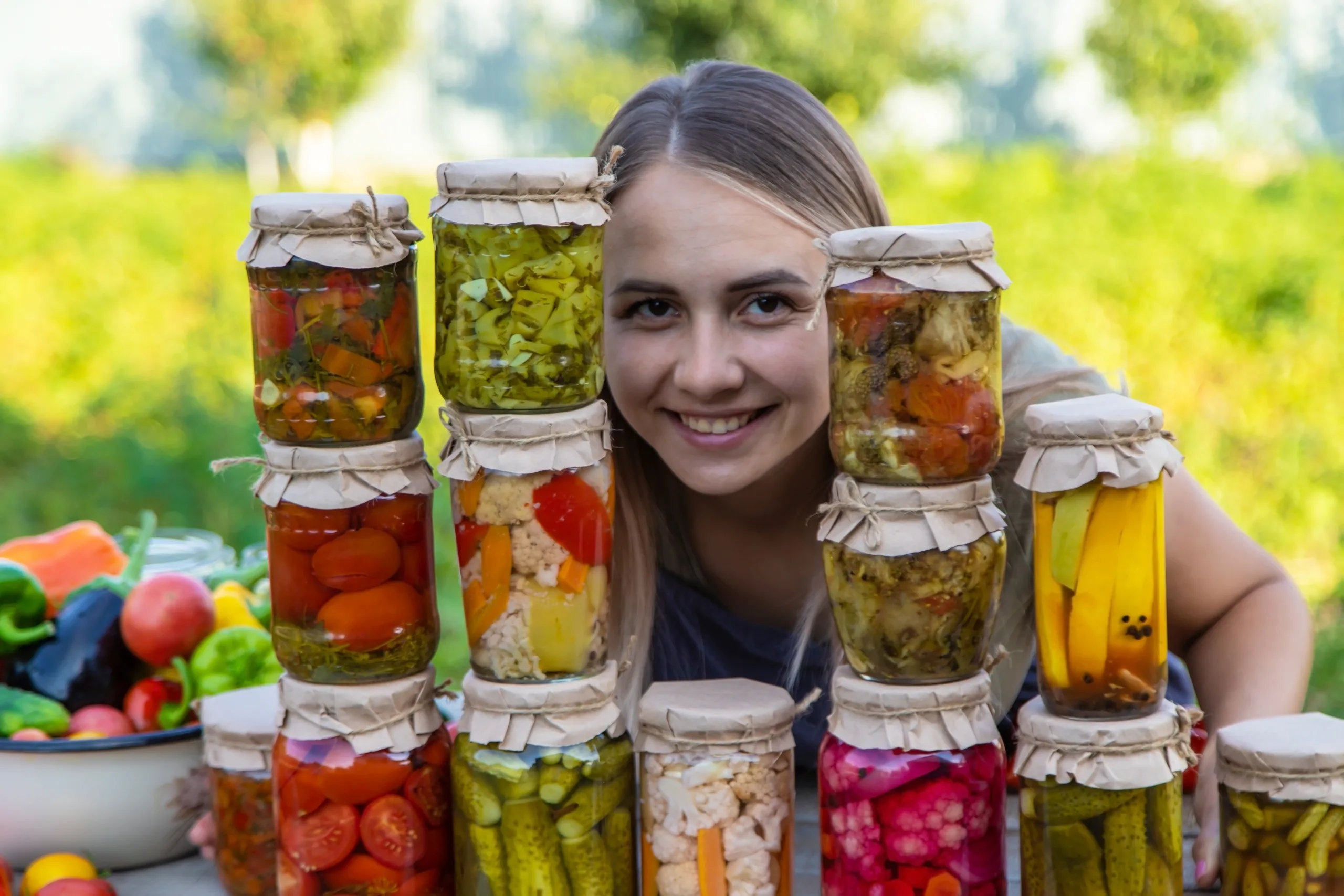Pickles, though made with similar ingredients across different regions, take on unique forms shaped by each country’s cultural fabric. From the Balkans to the Caucasus, from Mesopotamia to Anatolia, pickles are more than just a side dish; they are a narrative steeped in history, habits, and traditions. In this article, we explore how pickles are made, served, and what they signify in the countries neighboring Türkiye.
Türkiye: Pickles as a Mainstay of the Table
In Türkiye, pickles are not merely a side dish but often a meal in themselves. Beyond classic ingredients like cucumbers, peppers, and cabbage, pickles are diversified with vegetables such as unripe melons, cauliflower, purslane, and tomatoes.
Cultural Features:
- An integral part of winter preparations.
- Each region has its own signature pickles (e.g., bean pickles in the Black Sea region, beet stem pickles in Central Anatolia).
- “Pickle shops” and street vendors are a traditional part of urban life.
Presentation:
- Served on a separate plate, sometimes drizzled with vinegar.
- Pickle juice is also consumed as a beverage.
Greece: The Harmony of Cabbage and Vinegar
In Greece, pickles are often called “turshi” or “pikla.” The influence of Turkish cuisine is evident, but ingredient choices differ.
Highlights:
- Vinegar is predominant; lemon juice is rarely used.
- Mixed cabbage pickles (with seasonal vegetables) are widespread.
- Pickled onions, peppers, and cucumbers served with seafood are popular.
Presentation:
- Often enriched with olive oil and thyme in meze platters.
- Served in small dishes alongside wine.
Bulgaria: The Art of Fermented Cabbage – Selyo Turshiya
In Bulgarian cuisine, pickles, especially in winter, are a staple. One of the most well-known types is the cabbage pickle, Selyo Turshiya.
Cultural Details:
- Natural fermentation is preferred over vinegar.
- Enriched with aromatic ingredients like garlic, celery, and carrots.
- Often spiced with hot peppers for a sharp kick.
Presentation:
- Served with meat dishes and rakia (local spirit).
- Takes up significant space on winter tables, as essential as main dishes.
Armenia: Colorful Jars, Aromatic Flavors
In Armenian cuisine, pickles are vibrant in both taste and appearance. Layering different vegetables in colorful arrangements is common.
Highlights:
- Carrot, beet, cabbage, and green plum pickles stand out.
- Spices like coriander seeds and garlic are used generously.
- Pickles are left to ferment for long periods, resulting in intense flavors.
Presentation:
- A key component of meze spreads.
- Various pickles are served together on special occasion tables.
Iran: The Richly Spiced World of Torshi
In Iran, pickles are called torshi. The aromatic and spicy character of Persian cuisine is reflected in its pickles.
Distinctive Features:
- A wide variety of ingredients: eggplant, beets, garlic, olives, cauliflower, and more.
- Spices like turmeric, coriander, and cinnamon are heavily used.
- Pomegranate molasses or sour plum juice may be used instead of vinegar.
Presentation:
- Served alongside rice pilafs, kebabs, and stews.
- Stored in large jars for long-term home preservation.
Middle East: Olive, Spice, and Garlic Galore
In the cuisines of Lebanon, Syria, Jordan, and Palestine, pickles are a vital part of the meze culture. Pickles are made not only from vegetables but also from olives, lemons, and even legumes.
Highlights:
- Lemon and hot pepper pickles are particularly popular.
- High garlic content creates bold, intense flavors.
- Versions flavored with olive oil and sumac are common.
Presentation:
- Frequently served with hummus, falafel, and kebabs.
- Presented in colorful, appetizing dishes.
Similarities and Differences: A Shared Culture in a Jar
| Country | Common Ingredients | Distinctive Feature | Role of Pickles |
| Türkiye | Cucumbers, cabbage, peppers | Regional diversity | Side dish + main flavor |
| Greece | Cabbage, cucumbers | Vinegar dominance | Meze culture |
| Bulgaria | Cabbage, carrots, celery | Natural fermentation | Winter staple |
| Armenia | Beets, carrots, green vegetables | Aromatic, layered | Festive element |
| Iran | Eggplant, garlic, beets | Spice richness | Table complement |
| Middle East | Lemons, peppers, olives | Spices and garlic | Meze, snack |
Though differences exist across neighboring regions, the meaning of pickles remains strikingly similar: a way to gather around the table, make use of seasonal produce, and preserve flavor. Situated at the heart of this rich pickle culture, Türkiye carries the traces of a shared table stretching from the past to the present. While traditions may vary, every jar holds the same essence: labor, patience, and a desire to share.


